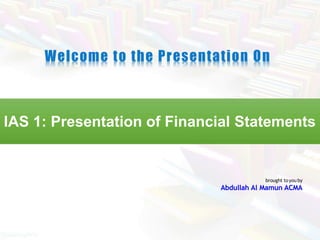IAS 1 provides the requirements for presenting general purpose financial statements to ensure comparability. It sets out guidelines for the structure of financial statements and minimum requirements for content. Financial statements must include a statement of financial position, statement of profit or loss and other comprehensive income, statement of changes in equity, and statement of cash flows. Notes to the financial statements must also be presented. IAS 1 specifies the components that must be presented in each financial statement and note disclosure requirements.


















































